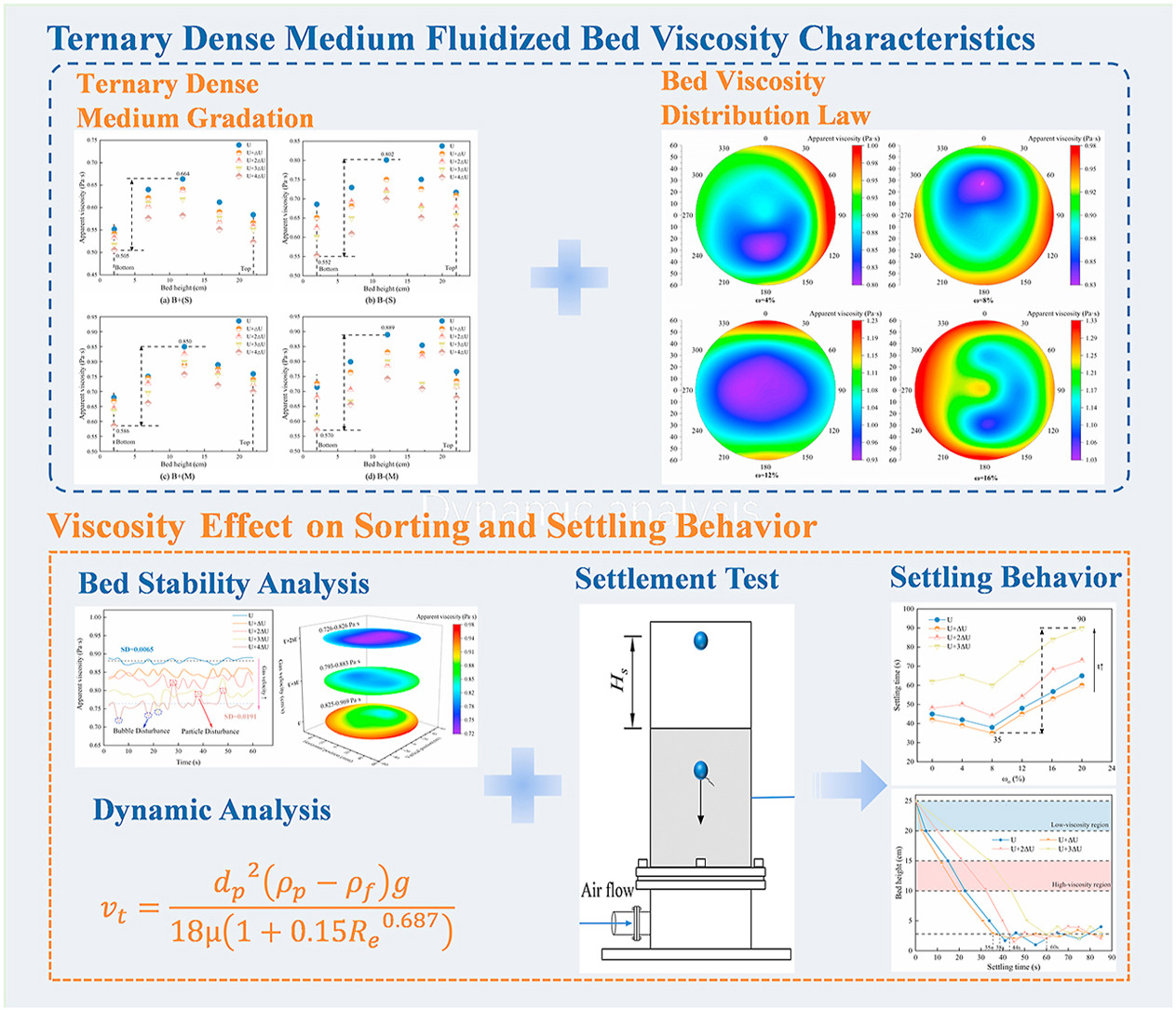• Effect of medium gradation on bed viscosity was investigated.
• Viscosity distribution in fluidized bed was clarified.
• Viscosity impact on particle settling behavior was revealed.
• Optimal viscosity range for efficient separation was defined.
Efficient dry separation is essential for utilizing low-grade oil shale. This study developed a ternary high-density gas–solid fluidized bed system using ferrosilicon powder, magnetite powder, and D-class oil shale particles, focusing on the impact of apparent viscosity on particle settling. Results showed that viscosity was influenced by medium composition, particle size, and flow structure. In the binary system of B− silicon and B+ magnetite, minimum viscosity (0.782 Pa s) was reached at a 40 % ferrosilicon ratio. In the ternary system, viscosity increased nonlinearly with oil shale content, with 8 % being the critical threshold where fluidization stability declined. Gas velocity significantly affected viscosity distribution, with moderate increases improving flow uniformity and reducing viscosity by 32 %–40 %. However, excessive velocity caused bubble coalescence and increased viscosity fluctuations, with standard deviation rising from 0.0065 to 0.0191 Pa s. Sedimentation tests showed that the middle bed region provided optimal separation at low gas velocity, while higher velocities shifted separation to the upper region. When gas velocity exceeds 0.45 m/s, the best separation efficiency is achieved. This study clarifies the relationship between viscosity and separation performance, providing guidance for optimizing dry oil shale separation.

